The Evacuation Of Dunkirk Part Five: Air Operations & Command-Level Games
August 11, 2017 by oriskany
Here we are, at last, Beasts of War, at the conclusion of this week’s explorations into Operation Dynamo, prompted by the movie “Dunkirk” that’s now playing in theatres. Essentially, this was the operation that evacuated 338,000 Allied troops who’d been trapped against the English Channel by the German invasion of France in 1940.
Follow Dunkirk Week Here
So far this week we’ve looked at Dunkirk’s place in the World War II timeline and how this desperate situation came about. We then looked at different ways Dunkirk-themed engagements can be brought to the table in 15mm, 20mm, and 28mm wargames.
Okay, so let’s “zoom out” a little from the foxholes and tank turrets of these miniature games, and take a look at the big picture for Dunkirk. First we’ll look at the crucial role that airpower played for both sides during these evacuations, and then discuss how larger, command-scale games can put you at the Dunkirk general’s table.
The Question Of Airpower
Since World War I, airpower is always been an important part of battlefield operations. In World War II it would become critical, and one of the first episodes that proved what airpower could (and couldn’t) was Operation Dynamo.
So again, German spearheads have pulled off a 200+ mile “left hook” from the Ardennes, through Belgium, and into France, cutting all the way to the English Channel and splitting off about 400,000 British and French troops in a pocket that was being pressed helplessly against the English Channel coast.
The next step for the Germans seems simple: order the panzers (there were PLENTY there) to make one more push and wipe out this pocket. The British had started their “Dynamo” evacuations, but they’d never have time to pull this off, right? Wrong. Because the Germans ordered their panzers to halt, and instead turned to their airpower.
Much ink has been spilled about this controversial “halt order.” Some say it was madness, because if the BEF had been wiped out at Dunkirk than England really WOULD lay defenceless against subsequent German invasion. Others maintain that the panzer spearheads were exhausted and shredded by this point, so they had to pause and regroup.
In any event, Hermann Göring promised Hitler and the generals that his Luftwaffe (air force) could wipe out the British and French at Dunkirk. This seems crazy in hindsight, since we know that airpower NEVER wins a war alone. But recall that airpower was still “new” in 1940, and so far the Luftwaffe had crushed anything it was aimed at.
So the British start their evacuation in the last days of May. The German ground forces are (for better or worse) catching their breath and giving the British time to get Dynamo started. The Luftwaffe starts intense bombing of Dunkirk, and the RAF (Royal Air Force) swoops in to the BEF’s defence.
When it comes to airpower, the British had been making their own controversial decisions. Earlier in the campaign, the British had by and large withdrawn all their fighter squadrons, essentially leaving France to her fate. British commanders realized that these precious fighters would be needed very shortly to defend Britain herself.
But with the “Dynamo” evacuations under ruthless Luftwaffe bombing and the fate of the BEF in the balance (at this point virtually the whole British Army that wasn’t scattered across the worldwide empire), the RAF was ordered back into the fray and a gigantic air battle erupted over the port and beaches of Dunkirk.
Comparing The Air Fleets
The Battle for France (including Dunkirk) probably sees the German Luftwaffe at the very height of its power (the very next campaign sees it defeated at the Battle of Britain). The Luftwaffe had about 2,400 aircraft at this point broken down into the following major types.
Most importantly we have their mainstay fighter, the Messerschmitt Bf-109 (mostly the “E”) variant. This was an excellent fighter for its day, fast and manoeuvrable, armed with twin 20mm automatic cannons and a pair of 7.92mm FF15 MGs (not unlike the MG34s being used by infantry squads).
The Germans also have the infamous Junkers Ju-87B “Stuka” dive-bomber, the awful, ugly, shrieking symbol of the Blitzkrieg that terrorized Europe from 1939 to 1941. The Stuka was perfect for precision strikes on ships that were trying to evacuate troops from Dunkirk, but was terribly vulnerable to enemy fighters if not protected by “109s”.
Other German types commonly seen over Dunkirk were the Junkers Ju-88, Dornier Do-17, and He-111C medium bombers. We also see lots of Messerschmitt Bf-110 “Zerstörer (“destroyer”) twin-engine “heavy fighters” – very ponderous in a dogfight but packing a whopping quadruple array of 20mm automatic cannon.
While the British have an oddball collection of bombers in service (this is long before the Lancaster, the Mosquito, the Typhoon or the Tempest), the RAF at this time really comes down to two fighter types: The Hawker Hurricane and the Supermarine Spitfire IA.
The Hawker Hurricane was Britain’s first monoplane fighter, made of stressed metal, wood, and even fabric stretched over a metal frame. Honestly it was nearing the end of its life as a front line fighter by this point, but with eight Browning .303 machine guns, it still packed a fearsome close-range punch.
The plan was to replace the Hurricane with the Spitfire, an aircraft type to become one of the most beautiful and iconic pieces of equipment to come out of World War II. But in early 1940 this replacement wasn’t even close to complete, and the redoubtable Hurricane would still account for the vast majority of RAF squadron strength.
The general doctrine for RAF fighter squadrons at this time was for the Spitfires to tangle with German Bf-109 fighters, thus freeing the slower Hurricanes (who still packed the same firepower as the Spitfire) to go after the Stukas and other German bombers. This way both RAF types were able to leverage their full strengths.
The RAF, however, was hampered by three basic drawbacks at Dunkirk. One, they had to fly across the Channel to engage at Dunkirk, which means they only had about 20 minutes of fuel (at full throttle) with which to dogfight over the actual combat area.
Second, the RAF was still using a tragically antiquated three-plane formation: A leader, a wingman, and a so-called “tail-end Charlie” that was supposed to cover them both. The problem with a three-man fighter formation is that’s someone is always on their own without a wingman, and too often this “tail-end Charlie” was a flying dead man.
Third, the RAF was grossly outnumbered, 4:1 by some estimates.
Yet despite all these disadvantages, the RAF was able to hold the Luftwaffe back to a sufficient degree that Operation Dynamo could get started. By the time the Germans realized the Luftwaffe wouldn’t be able to do the job alone (and ordered their tanks to get moving again), it was largely too late.
Command Level Games
Of course, any of these miniature games, regardless of the scale, are simply too small to stage a battle that will affect the outcome of Operation Dynamo, or even provide a meaningful insight into the context of what was going on. There are some 800,000 men involved in a battle area initially 40 miles across. You gonna do that in 28mm?
It’s a different kind of game, and it’s frankly not for everyone. But if this kind of perspective interests you, then it’s time to step up to the general’s table and start pushing divisions, corps, and armies around. It’s time for the Command Level game.
White Dog Games’ “A Spoiled Victory: Dunkirk 1940” (Paul Fish, Hermann Luttmann, 2014) is a good place to start, a solitaire operational-level setup where the player tries to “beat the game” and evacuate as many regiments, brigades, and divisions as he can before the Germans implode the Dunkirk Pocket.
Even better is GMT’s “Case Yellow, 1940: The German Blitzkrieg in the West.” GMT makes some of the best operational-level games out there, and with this one you can play the whole campaign in the west as either the Germans or the Allies, and see of a “Dunkirk” situation even happens at all.
Dunkirk: Summary & Aftermath
By June 4, Operation Dynamo was drawing to a close. Over 330,000 troops (240,000 British and 98,000 French had been evacuated. Only 35,000 remained to make the final defence (mostly the French 2nd Light Mechanized and 68th Infantry Divisions). Dunkirk was finally taken by the Germans.
What many people don’t realize is that this wasn’t even close to the end of the Battle of France. This was the end of the first phase, “Case Yellow.” Now the Germans pivoted south, reorganized, and launched “Case Red” – the invasion of interior France and the drive on Paris. Here, France would largely fight alone until her final surrender.
Some very small British units were still in France, but this only led to smaller, lesser-known evacuations that would have to be undertaken later in June. These include Operation Cycle (evacuation via Le Havre) and Operation Ariel various western French ports, including Sainte Nazaire).
Sadly for the British, these kinds of sea evacuations were just getting started. Similar evacuations would have to be undertaken from East Africa, Greece, and Crete before the war finally started to turn. But Dunkirk was a miracle nonetheless, a daring and complex operation that HAD to succeed if Britain hoped to continue the fight.
The troops who were rescued were understandably relieved. The people also welcomed them home, and Britain was swept by a wave of celebration and thanksgiving. Churchill was quick to warn the people, however, not to look at Dunkirk as a “victory.” As he would say: “Wars are not won by evacuations.”
This concludes our look at Dunkirk. If you’ve seen the new movie, tell us what you thought of it in the comments below. Do you plan to bring Dunkirk or its surrounding battles to the table top? What are your thoughts on wargaming in the “Miracle of Dunkirk?”
If you would like to write an article for Beasts of War then please contact us at [email protected] for more information!









































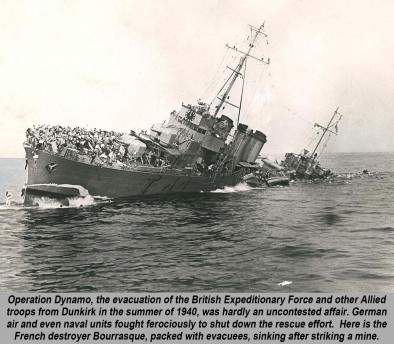
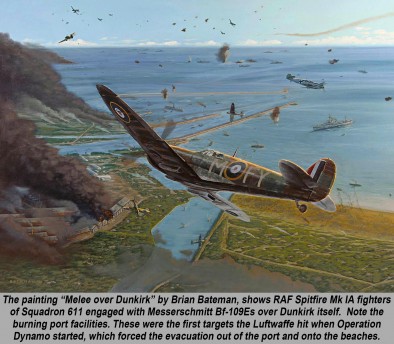
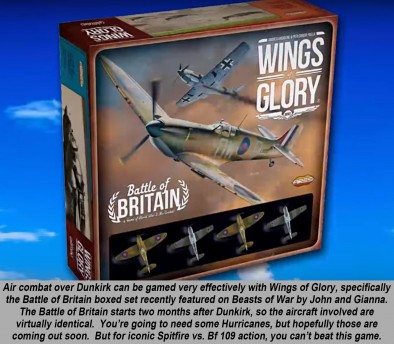
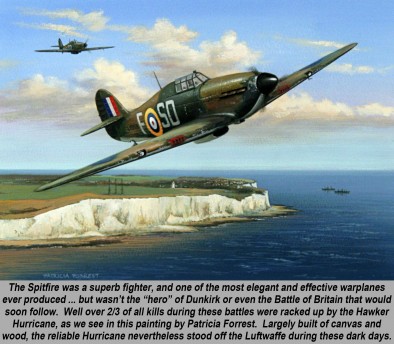


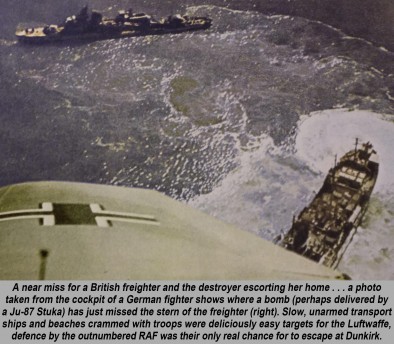

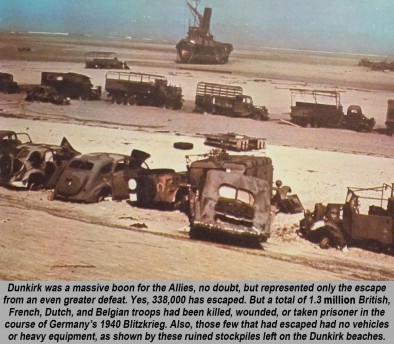



































Well as I was asked directly to comment I think I should. Whilst it sounds like Dunkirk would be a great Naval game given all the ships, I don’t think there is that much in the way of Naval games that would be interesting. Why well there a number of factors: 1. The German Navy was under prepared going into WW2 they did not have the ability to stand up to the Royal Navy. 2. Whilst the Army had a direct route from Germany to France, this is not the case, all the main German Ports were in the Baltic… Read more »
Thank you mate 🙂
Oh, sure . . . @warzan comments when its @commodorerob on the thread! 😐 Just kidding, of course. 😀 😀 I have read about U-boat and E-boat encounters during the Dunkirk evacuations, but I have no details in front of me. German mines posed a problem, as we see with the French destroyer at the top of the article. And lastly, here we see that photo with the wrecked trucks all parked in neat rows. I had never known why that was. 😀 Warren told me in Part 1 about the trucks being emergency parked like this to form the… Read more »
lol… @oriskany well he did specifically ask me to comment 😉
Seriously though I did think about mentioning UBoats and mines but then in most Naval war games I have played these are incidental factors rather than the focus, so don’t have much experience of basing a game around them.
The E-boats are what I had in mind with regards to coastal forces, I know there were a number of channel engagements that involved E-boats during the war, but my knowledge is sadly lacking as to the Dunkirk period. My interest for WW2 naval gaming is destroyers upwards 🙂
Oh, don’t get me wrong, I totally agree with what you’re saying I was just saying there was some “quasi-naval” action with U-boats, e-boats, and mines Nothing that would make a terribly exciting naval game, though.
Maybe some “what-ifs” like if Scharnhorst of Gneisenau (were they even operational this soon after Norway?) got a little ballsy and tried to interfere with the Dunkirk evacuations. 11-inch shells make pretty pictures when they land in the midst of transport ships packed to the gunnels with troops. 🙁 🙁
@oriskany as you probably know The Scharnhorst and Gneisenau were involved in the Norway campaign and had to return to Wilhemshaven (Sp?) for repairs and did not return to sea till early June, and that was to rejoin the Hipper in Norway.
I guess if you concluded the events in the Baltic quicker and the Scharnhorst, Gneisenau and Hipper managed to sneak down to attack the fleets with their supporting destroyers that could be an interesting game.
Right @commodorerob – this was my question – were the Scharnhorst or Gneisenau even ready after Norway / Weserubung? It didn’t sound right in my head.
But hey, they’s why the call it “what-if”. 😀 And yes, those 11″ shells in the middle of British troop transports make pretty pictures, but not as pretty as 15″ and 16″ shells from say HMS Hood and Rodney landing in the middle of German battlecruisers. 😀
I’m in agreement with @commodorerob and @oriskany on this one too. You’re struggling to get a meaningful naval action out of the Dunkirk evacuation that’s not just RN ships as targets for the Luftwaffe. There are a couple of historical options I can think of but they are not ship to ship actions: 1. MA/SB operation – of the few dedicated coastal forces the British had at this time they used their motor anti submarine boats as high speed taxis for the top brass getting in and out of Dunkirk. This game would play a bit like a WW2 version… Read more »
what about rolling three dice for each navel vessel if you get three ones? its hit a mine/torpedo, guys.
maybe, @zorg . 😀
PS Regarding Scharnhorst and Gneisenau around this time; on 9 April there was a short engagement off the Lofoten Islands with the British Battlecruiser Renown, during which Gneisenau was hit 3 times and Scharnhorst sustained serious weather damage necessitating both ships recall to Wilhelmshaven. They didn’t venture out again till 4-9 June when they operated against British ships off the Norwegian coast, on 8th June engaging and sinking the carrier Glorious and her escorting destroyers Ardent and Acasta, though Scharnhorst herself was hit by a British torpedo in the same action and badly damaged. On 20 June Gneisenau was hit… Read more »
Yeah, @broadsword , I tossed out the idea as an alternative history choice, but even as I was writing it I was wondering about the state of these ships after Weserubung. @commodorerob game me the June date. I didn’t know about the battle vs. Renown, though, and most of these other details. Great stuff! 😀 😀 😀
Awesome. Thanks for posting @broadsword and adding more naval perspective. 🙂 Indeed, the “dirty secret” of historical wargaming is that not every historical battle makes a good wargame. Or, in this case, not every PART of a given battle or operation makes for a good game. We see it here at Dunkirk. Despite the huge naval and maritime effort mounted to rescue these army, there really isn’t much of a naval “battle” here. There are shipping losses – accidents, ships running aground, hit by Stukas, hitting mines, etc. But not really a wargaming friendly “battle.” I like your shipping race… Read more »
Really like your stuff, the What Happened and the (What If) you’ve put out. So here’s a funny one.
A quick one and may be a silly one, but I remember some time ago and I’m talking years ago a friend of mine who was well into WWII, may be, as well into it as you, told me this silly story.
Did the Germans one-time, drop wooden bombs on to the beach.
Like I said it’s a funny one. or is it something I’ve made up in my head. lol.
Definitely could be, @nosbigdamus – I haven’t read about it but that certainly doesn’t mean it didn’t happen. “Dry runs” like this do make a difference in combat. Of course it’s better to he throwing live ordinance, but if none is available right then, these kinds of “dummy attacks” do have a benefit. Wooden bombs could cause British troops on the beach to scatter (they don’t know that bomb is wood when its screaming down on them). That plane is probably drawing AA fire away from another plane that could be carrying real ordinance, etc. British troops re under cover… Read more »
Don’t forget that awful siren the Stukas used.
I’m not sure how authentic the noise in the movie is, but real bombs or not I’d be running and diving for cover if I heard them …
Oh, it’s authentic, @limburger . That noise was unnerving, and purposefully so. Additionally, there’s the fact that you know there’s a 500-kg bomb behind it . . . and also that people weren’t nearly as used to loud aggressive noises back then. In many parts of the European countryside, the car was relative rarity. Jet planes hadn’t been invented yet. Nowadays we have screaming jets shrieking over us all the time, high speed trains, heavy metal music 😀 , you name it. I doubt the Stuka would be as effective psychologically today. Later in the war, one of the things… Read more »
Thank you, for putting some reality behind something that sounded silly but ends up possible.
😀
Just got caught up on all this. I’ve never been overly interested in Dunkirk, possibly because we had our ass handed to us. Seems the Allies really blundered through WWII up until about ’43.
So it was good to get a fresh perspective, and of course a Panzer Leader board always grabs my attention, regardless of the context! 🙂
Well done @oriskany! 🙂
Thanks, @cpauls1 – and yesm I feel (just personally) that Panzer Leader is just so much more fun in early war. The tanks are nearly as powerful and there are practically no assault guns, so a combined-arms solution with infantry, MG sections, mortars, ATGs, artillery, field guns, all become so much more important. Also the ranges are so much shorter (PzKpfw IIID has an RF of 2. Not kidding) – that it opens up so much more room for maneuver. You can flank, wheel, charge . . . do that in front of Panthers or Tigers and you get your… Read more »
I was watching a program today that covered a number of different facts. One caught my attention about a boat that was licenced for 22 people called the Sun Dancer. I missed the captain’s name but he was one of the surviving crew of the Titanic and was in charge of filling some of the life boats. He got a lot of criticism about holding to women and children first and releasing life boats before they were full. The Sun Dancer return to England dangerously over loaded. Redemption? The infamous halt order. So much has been written and filmed about… Read more »
Thanks, @jamesevans140 – One caught my attention about a boat that was licensed for 22 people called the Sun Dancer. In the course of my research I ran across an article about the Massey Shaw – a London fireboat that was used at Dunkirk, then was about to be scrapped more recently until a group of people raised some money and spent something like six years restoring her to original condition. 😀 The infamous halt order. Oh God, here we go. 😀 Man, that whole “German high command was influenced by astrology and the occult” is such a gigantic myth… Read more »
Command Decision or Test of Battle as it’s now called and Spearhead would be the best two in my opinion
I have seen some threads on Test of Battle (Bob MacKenzie’s work) – amazing stuff, especially for the Eastern Front.
Okay, a few things – 1 – I will not scratch the back of my head during these interviews! Apparently that’s where these annoying audio feedbacks come from. 🙁 🙁 🙁 2 – Apologies for the typo in Image 08. That’s supposed to read: Panzer Leader 1940, not 190. 3 – in the interview, one point I missed regarding that 200-250 mile operational range of a mechanized push … the thing is, when an army moves across enemy country and we see these big arrows slashing across the map, we have to remember that the invader has to CONTROL all… Read more »
Oh with the halt order thing, I am staying away from UFO’s and contact from other dimensions. I will stick with Mrs Brown’s cat and the ducks. I just can’t believe how much has been written on this order but so very badly researched. Like the Hess thing. What kind of peace gift involves bombing the beaches and sinking ships?
Oh, crap, I forgot about that one. Hitler MEANT to let the British flee so he could sign a peace treaty with them afterwards.
What planet are these people from? 😀
was it not around a third of the RAF ended up over the battlefield/France with most being shot down.
Losses were very high, yes, @zorg . In fact, the first tactical bombing attempt on a German-held bridge wound up still to this day being the highest loss % rate for an air mission in the history of aerial warfare. This, plus heavy fighter losses, and the realization that Germany would be coming for Great Britain next, prompted Hugh Dowding (Commander, RAF Fighter Command) to appeal to Churchill to pull all RAF squadrons out of France. This was seen as a betrayal and abandonment by the French, but the RAF came back in later when they had to cover the… Read more »
A truly enjoyable, and educational, set of articles. All those swear words echoing from your office and 3 am photo editing sessions paid off in a big way. Can wait to see what the next 5 article/interview theme week will be 😉
“All those swear words echoing from your office and 3 am photo editing sessions paid off in a big way”
Stop giving away all my secrets! 😀 😀 😀
Loved the series. Always looking for new scenarios to play other than line out and shoot each other. Lots of good ideas on how to use the various systems in new ways, On a wide side note, I don’t remember folks thinking Air Power would be all that was needed for Gulf 1. The plan was take out ADA, establish total Air Superiority, that pins the bad guys in place. Once you got that, send in the ground troops. The bad guys can come out to play, and get bomb, or hide in the ground and get buried. The ultimate… Read more »
Thanks, @wiseolbird – Glad you liked the articles and the interview series. 😀 I agree, any different way to play wargames — or at least other objectives other than “bang, you’re dead” — are great. Apologies if I misrepresented my point about air power in Gulf One. The Desert Shield gear up started within a week after the invasion on August 2, 1990 (even sooner than that if you include advance deployments. At the very outset the mission was first to defend Saudi Arabia in case Hussein continued his invasion through the Ras Tannurah region, toward Qatar / Bahrain, etc.… Read more »
Thank you for a really inspiring article series. You should keep doing themed weeks like this. I liked that you referenced sci-fi gaming and a little bit fantasy too. The mix of historical events, sci-fi and fantasy was for me very inspiring. I specially like when you were talkung about scenario design.
@peacefulwarrior – thanks very much, and very glad you enjoyed the series. 😀 These themed weeks are indeed a lot of fun, but even more work than a normal article series (since all the articles have to be done up front). And of course, having the additional input from people like Rich, Jes, Gerry, and Warren only makes it ten times better. 😀
So does this mean we’ll be seeing an “Evacuation Fleet Commander” or a Star Wars: Hoth battle from you in the forums soon? 😀
Blitzkrieg is interesting as it had been in development in one form or other since about 1870. von Schlieffens idea was that Germany would always be under resourced in any war it fought so the idea was to drive deep and fast into enemy territory and behind their front lines and secure a major victory without having to destroy the enemy. You can see an excellent use of combined arms in the Battle if Hamel where Monash developed an infantry and tanks attack supported by aircraft dropping ammo and other supplies to keep the advance going and led to one… Read more »
Great post, @torros – with your 1870 reference I presume you’re talking about the France-Prussian War in 1870-1? We very quickly touched on this in the Part 1 interview. I could certainly agree that putting together an operational-scale combined arms doctrine into the field, applied against an enemy using surprise, speed, shock effect, and coordination has been around for a while. Specific to “blitzkrieg,” I suppose that depends on how we define the word. Fuller’s writings were certainly influential. But it was men like Guderian in Germany and Mikhail Tukhachevsky in the USSR that were able to take these ideas,… Read more »
I think we see the problems with not having radio communication in Germanys attack into France during 1914 . All it took was a lack of communication between 2 of the German Corps (one goes too far west) it give an opportunity for the French too drive into its flanks at the Marneand effectively end Germany’s chance if winning the war. OK there were other problems with Prince Rupert not following the plan that didn’t help the German effort but the Marne was the turning point
Wow, didn’t even know radio communication was a thing in WW1. Then again, I’m on much shakier ground when it comes to WW1. But I always thought WW1 was wire communication, telegraph, sound-power telephones and the like. 😀
Maybe I worded that wrongly. What I meant was that there wasn’t any radio communication for land troops during 1914 and this led to errors by Germany
Either that or I read it too fast. I’m trying to keep up with like six threads here. 😀
For WW2 air games I would look at ‘Bag the Hun’ and ‘Algernon pulls it off’ by TFL or Check your 6 . A friend did a WW2 version of Blue Max which is excellent but sadly no longer available online. Another good game would be the Down in Flames card game by GMT which is excellent
Awesome ideas, @torros ! 😀
always been a fan of Houstie’s Blue Max games.
The WW2 version was written by Ian Clarence. He was also the one who got me into Down in Flames . He did some development work for it as wrll
I’ll have to check these out. I’ve been tinkering with a WW2 fighter game design of my won for years (off and on). But it always becomes a little too clunky and complicated. Time to steal more ideas from other people:
Latest iteration of my game: working title: Aces High
http://www.beastsofwar.com/groups/historical-games/forum/topic/playtesting-new-home-game-aces-high/
Interesting discussion guys. The terms like blitzkrieg and combined arms is the biggest issue as their precise definition is not locked down and so they mean different things to different to different people. There is a hidden flaw to German operational warfare that is hard wired in during the Franco-Prussian war. Operational Warfare becomes predominate and focuses on translating tactical operation into operational success, at the expense of the strategic. In Russia this flaw would be cruelly exposed. Fuller’s Expanding Torrent was seriously politically flawed. He was proposing universal arms rather than combined arms. In expanding torrent it was an… Read more »
Gotta agree with just about everything in your post, @jamesevans140 – Blitzkrieg definition: It’s just become one of those buzzwords to mean fast, aggressive warfare. Well shit, you can pull that back all the way to Alexander the Great. I try to keep Blitzkrieg (capital B) “brand specific,” strictly what the Germans were working on before WW2 and in the first three years or so. Franco-Prussian War: Indeed, the Germans picked up a lot of lessons I feel they mis-applied later. The Schlieffen Plan, for one. Second, the idea of the “Kasselschlacht” (hopefully I’m spelling that right) – or cauldron… Read more »
I like planes!
There she is! 😀
My WIP progress game for WW2 fighter combat:
http://www.beastsofwar.com/groups/historical-games/forum/topic/playtesting-new-home-game-aces-high/
You guys have fun at GenCon! 😀
Great Series!
Black Cross/Blue Sky could probably work for the air battles if your lucky enough to have it.
Thanks very much, @barretem30 , glad you enjoyed the series!
I did a quick search for Black Cross Blue Sky and what did my wondering eyes behold? Hexes! Ah, hexes. They make me feel good all over. 😀 Nominated for the Charles S. Roberts Award for best historical miniatures rules set in 1996 . . . nice.